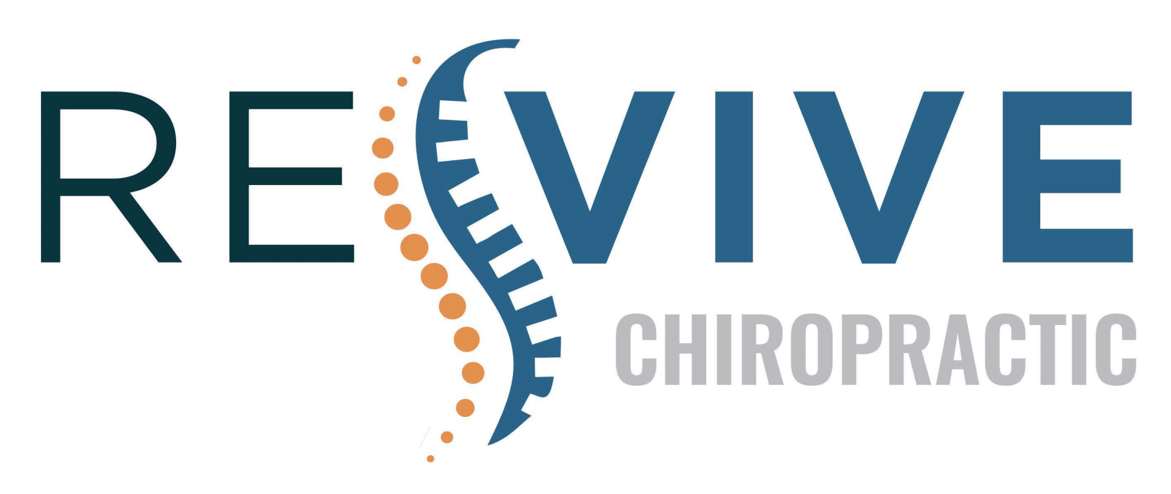You've probably experienced the nagging discomfort of a headache and sought various remedies. What if you could find effective natural relief through chiropractic adjustments? These specialized techniques not only address spinal alignment but also target muscle tension that contributes to headaches. By understanding how these adjustments work and their benefits, you may discover a proactive approach to managing your symptoms. But the real question is—what techniques can you incorporate into your routine for lasting relief?
Understanding Headache Types
Headaches can be classified into several types, and understanding these distinctions is key to finding effective relief. When you experience a headache, it's crucial to identify what type you're dealing with to address it appropriately. The most common types include tension headaches, migraines, and cluster headaches.
Tension headaches often feel like a tight band around your head, causing mild to moderate pain. They can be triggered by stress, poor posture, or muscle tension in your neck and shoulders. If you notice that your headache comes on gradually and is accompanied by a sense of tightness, you're likely experiencing a tension headache.
Migraines, on the other hand, are typically more intense and can be accompanied by other symptoms like nausea, vomiting, or sensitivity to light and sound. They often come with warning signs, known as an aura, which can include visual disturbances or tingling sensations. If you find yourself retreating to a dark, quiet room when a headache strikes, it's likely a migraine.
Cluster headaches are less common but can be excruciating. These headaches occur in cyclical patterns, often waking you from sleep with sharp pain around one eye. If you experience these episodes, it's vital to consult a healthcare professional for proper management.
How Chiropractic Adjustments Work
Chiropractic adjustments focus on aligning your spine to improve your nervous system function.
When your spine is misaligned, it can lead to muscle tension and headaches.
Alignment and Nervous System
When your spine's alignment is off, it can create tension that disrupts your nervous system, leading to discomfort like headaches. Your nervous system is responsible for sending signals throughout your body, and any misalignment can interfere with these messages. This disruption can cause pain, tightness, and even fatigue as your body struggles to function effectively.
Chiropractic adjustments aim to restore proper spinal alignment, alleviating pressure on nerves. When your chiropractor adjusts your spine, they're not just realigning bones; they're enhancing the communication between your nervous system and brain. Improved alignment allows your body to respond better to pain signals, reducing headache frequency and intensity.
You might be surprised at how quickly your body can react to adjustments. Many people experience immediate relief, while others notice gradual improvement over time. By prioritizing spinal health, you're actively supporting your nervous system's function, which can lead to long-term headache relief.
Incorporating regular chiropractic care into your routine can keep your spine aligned and your nervous system functioning smoothly. Taking this proactive approach might just be the key to enjoying a headache-free life.
Muscle Tension Relief
Muscle tension often accompanies misalignment in the spine, contributing considerably to discomfort and headaches. When your spine's out of alignment, it can create stress on the surrounding muscles, causing them to tighten and spasm.
This tension often radiates into your neck and head, leading to those nagging headaches you want to avoid.
Chiropractic adjustments work by restoring proper alignment to your spine, which helps relieve muscle tension. When a chiropractor applies targeted pressure to specific joints, it encourages your body to return to its natural position.
This realignment reduces the strain on your muscles, allowing them to relax and function more effectively.
As your muscle tension decreases, you'll likely notice a significant reduction in headache frequency and intensity. You may also experience improved range of motion and less overall discomfort.
Regular chiropractic care can play an essential role in maintaining that alignment, thereby preventing muscle tension from building up again.
Benefits of Chiropractic Care
Many people experience headaches and seek effective relief options. Chiropractic care offers a holistic approach that can greatly help alleviate headache symptoms. By focusing on the spine and nervous system, chiropractors address the root causes of your discomfort rather than just masking the pain.
One of the main benefits of chiropractic care is its ability to improve spinal alignment. Misalignments can lead to tension and stress in the muscles surrounding the head and neck, which often contributes to headache pain. When your spine is properly aligned, it can reduce muscle tension and improve blood flow, potentially decreasing the frequency and intensity of your headaches.
Another advantage of chiropractic treatment is its focus on personalized care. Your chiropractor will assess your unique situation and develop a tailored treatment plan that suits your specific needs. This individualized approach guarantees you're receiving the most efficient care possible.
Moreover, chiropractic care promotes overall wellness by enhancing your body's natural healing abilities. When your nervous system functions at its best, your body can better manage stress and tension, which are common headache triggers.
Chiropractic adjustments can also provide immediate relief, allowing you to experience a greater sense of comfort and improved quality of life. You may find that with regular visits, your headaches become less frequent and less severe.
Choosing chiropractic care as a natural headache relief option not only addresses your current pain but also works towards long-term health and well-being.
Techniques Used in Adjustments
When it comes to chiropractic adjustments, several techniques can help relieve your headaches.
Chiropractic manipulation, trigger point therapy, and soft tissue mobilization each play an essential role in addressing the underlying causes of your discomfort.
Understanding how these methods work can empower you to make informed decisions about your care.
Chiropractic Manipulation Techniques
Chiropractic manipulation techniques are essential tools for alleviating headaches and improving overall spinal health. These techniques focus on realigning the spine and reducing tension in your muscles. By applying precise pressure to specific areas, you can experience immediate relief from headache symptoms.
One common technique is the spinal adjustment, where your chiropractor uses their hands or a specialized instrument to apply a controlled force to your spine. This action helps restore proper alignment and function, which can reduce headache frequency and intensity.
You might also encounter the diversified technique, which combines various adjustment styles for a tailored approach that suits your individual needs.
Another effective method is the Gonstead technique, which emphasizes a thorough analysis of your spine and nervous system before performing adjustments. This precision helps target the root cause of your headaches.
Additionally, the Activator method uses a small, handheld device to deliver gentle impulses to specific vertebrae, promoting mobility and reducing discomfort.
Incorporating these chiropractic manipulation techniques into your wellness routine can lead to significant improvements in your overall health, not just in headache relief. Regular adjustments can enhance your quality of life, allowing you to enjoy daily activities without pain.
Trigger Point Therapy
Trigger point therapy can effectively tackle headaches by targeting specific muscle knots that contribute to tension and discomfort. This hands-on technique focuses on relieving tight areas in your muscles, which can often lead to referred pain—pain that's felt in another area, like your head. By addressing these trigger points, you can find significant relief from headaches.
Here are three key aspects of trigger point therapy:
- Identification: A trained therapist will locate the tight knots in your muscles, often through palpation. You might feel some discomfort during this process, but it's essential for effective treatment.
- Pressure application: Once the trigger points are identified, the therapist applies direct pressure to these areas. This helps release the tension, improving blood flow and reducing pain.
- Stretching and movement: After pressure is applied, gentle stretching and movement techniques may be introduced to further enhance muscle relaxation and flexibility.
Soft Tissue Mobilization
After addressing trigger points through targeted therapy, you might consider soft tissue mobilization as another effective technique for headache relief. This method focuses on manipulating the soft tissues in your body, such as muscles, fascia, and tendons, to enhance blood flow and relieve tension.
During a session, your chiropractor or therapist will use various techniques, including kneading, stroking, and stretching. These actions help to break up adhesions and improve the elasticity of your soft tissues. By doing so, you'll likely experience reduced muscle tightness, which can greatly alleviate headache symptoms.
Soft tissue mobilization can also promote relaxation, contributing to an overall sense of well-being. When your muscles are relaxed, you're less likely to experience the tension that often triggers headaches.
You may find this technique particularly beneficial in combination with chiropractic adjustments, as it enhances the effects of spinal realignment.
Regular sessions can lead to long-lasting improvements in headache frequency and intensity. So, if you're looking for natural relief, soft tissue mobilization is worth considering as part of your holistic approach to managing headaches.
Patient Experiences and Testimonials
Over the years, countless patients have shared their journeys toward finding natural headache relief. Many of them have turned to chiropractic adjustments and experienced remarkable transformations.
These personal stories highlight the effectiveness of adjustments in reducing headache frequency and intensity. You might be surprised by how many people report significant changes after just a few sessions.
Here are some common themes from their testimonials:
- Immediate Relief: Many patients experience instant relief after their first adjustment. They often describe a sense of pressure lifting from their head and neck, which contributes to a feeling of clarity.
- Long-Term Benefits: Several individuals note that regular adjustments have led to fewer headaches over time. They appreciate the cumulative effects, as consistent care helps maintain better alignment and overall well-being.
- Holistic Approach: Patients frequently mention how chiropractic care complements other natural remedies, like yoga or acupuncture. This integrated approach helps them manage stress and tension, which are often headache triggers.
These testimonials emphasize that you're not alone in your struggle with headaches. Many people have found a path to relief through natural methods, including chiropractic adjustments.
Your journey might inspire someone else to seek a similar solution. If you're ready to explore this option, consider reaching out to a chiropractor to learn how they can help you reclaim your life from headaches.
Integrating Adjustments Into Your Routine
Many people find that integrating chiropractic adjustments into their routine can be a game-changer for managing headaches. When you make these adjustments a regular part of your life, you're not just addressing symptoms; you're tackling the root causes of tension and discomfort.
Start by scheduling your adjustments consistently, whether that means weekly, bi-weekly, or monthly sessions. Discuss with your chiropractor to find the right frequency that fits your needs.
Incorporate your adjustments into your self-care routine. Plan your appointments around other wellness activities, like yoga or meditation, to enhance relaxation and stress relief. This holistic approach can amplify the benefits of your adjustments and keep you feeling your best.
Pay attention to how your body responds after each session. You might notice a decrease in headache frequency or intensity, which can motivate you to stick with the program. It's also helpful to keep a headache diary, noting when headaches occur and any potential triggers. Share this information with your chiropractor during visits for more personalized care.
Finally, involve your family or friends. Encouraging a loved one to join you for adjustments can create a supportive environment, making it easier for both of you to maintain your commitment to wellness.
Conclusion
Incorporating chiropractic adjustments into your routine can lead to effective natural headache relief. By understanding your headache type and how these adjustments work, you can experience reduced frequency and intensity of pain. The benefits of chiropractic care extend beyond just headache relief, promoting overall wellness. With various techniques available, you can find the right approach for your needs. Don't wait for headaches to disrupt your life—take proactive steps towards relief and improved health today!



